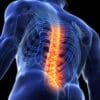Can Shoulder Pain Be a Result of a Shoulder Blade Injury?
Shoulder pain is a common complaint that affects many individuals across different age groups. It can stem from various causes, ranging from simple muscle strain to more complex issues involving the shoulder blade or scapula. But can shoulder pain specifically be a result of a shoulder blade injury? The answer is a resounding yes. Understanding the intricacies of how shoulder blade injuries lead to shoulder pain can help in proper diagnosis and treatment, ensuring better health outcomes.
Understanding the Shoulder Blade
The shoulder blade, or scapula, is a triangular bone that connects the upper arm bone (humerus) to the collarbone (clavicle). It plays a crucial role in shoulder movement and stability. Several muscles attach to the scapula, helping in the movement of the shoulder joint. Given its pivotal role, any injury or dysfunction in the shoulder blade can result in significant pain and discomfort.
How Shoulder Blade Injuries Cause Shoulder Pain
1. Muscle Strain and Sprain
Muscle strain or sprain around the shoulder blade is one of the most common causes of shoulder pain. This can occur due to overuse, poor posture, or sudden movements. The muscles around the scapula, like the trapezius and rhomboids, can become overstretched or torn, leading to pain that radiates to the shoulder.
2. Scapular Dyskinesis
Scapular dyskinesis refers to the abnormal movement of the shoulder blade. This can happen due to muscle imbalances, nerve injuries, or inflammation. When the scapula does not move properly, it can cause pain and limit the range of motion in the shoulder joint.
3. Fractures
Fractures of the scapula are relatively rare but can cause intense shoulder pain. These fractures typically result from high-impact trauma, such as a car accident or a fall from a height. The pain from a scapular fracture is usually severe and requires immediate medical attention.
4. Bursitis and Tendinitis
The scapula has several bursa, which are small fluid-filled sacs that reduce friction between bones and tissues. Inflammation of these bursae (bursitis) or the tendons (tendinitis) can result in pain around the shoulder blade, which often extends to the shoulder.
5. Referred Pain
Sometimes, pain originating from the shoulder blade can be referred pain from other regions of the body. For instance, issues with the cervical spine (neck) can cause pain that radiates to the scapula and shoulder area. Similarly, internal conditions like gallbladder disease can manifest as shoulder blade pain.
Symptoms of Shoulder Blade Injury
Identifying the symptoms associated with shoulder blade injuries can help in early diagnosis and treatment. Common symptoms include:
– Pain that worsens with shoulder movement
– Swelling or bruising around the shoulder blade
– Limited range of motion in the shoulder
– A popping or grinding sensation in the shoulder joint
– Pain that radiates from the shoulder blade to the neck or upper back
Diagnosis and Treatment
Diagnosis
Diagnosing the cause of shoulder pain requires a thorough medical evaluation. This may include:
– Physical Examination: Assessing the range of motion, strength, and areas of tenderness.
– Imaging Studies: X-rays, MRI, or CT scans to visualize the bones, muscles, and tissues around the shoulder blade.
– Electromyography (EMG): To evaluate the electrical activity of muscles and identify nerve injuries.
Treatment
Treatment for shoulder blade injuries varies based on the underlying cause. Common treatment modalities include:
– Rest and Ice: Reducing activity and applying ice to the affected area to decrease inflammation.
– Physical Therapy: Exercises to strengthen and stretch the muscles around the shoulder blade.
– Medications: Anti-inflammatory drugs to manage pain and swelling.
– Surgery: In severe cases, surgical intervention may be necessary to repair fractures or torn tissues.
Preventing Shoulder Blade Injuries
Prevention is always better than cure. Here are some tips to prevent shoulder blade injuries:
– Maintain Good Posture: Proper posture can prevent muscle strain and overuse injuries.
– Regular Exercise: Strengthening the muscles around the shoulder blade can enhance stability and reduce the risk of injury.
– Ergonomic Adjustments: Ensure that your workstation is ergonomically set up to prevent strain on your shoulder and neck.
– Avoid Overuse: Take breaks and avoid repetitive movements that can strain the shoulder muscles.
Experience Pain-Free Life with Fitpaa
If shoulder pain has been a constant companion, it’s time to take action. Fitpaa, your ultimate health and fitness partner, is here to help you achieve a pain-free life. Our AI-driven metabolism monitoring and management technology ensures that you receive personalized care tailored to your specific needs.
Why Choose Fitpaa?
At Fitpaa, we believe in a holistic approach to health and wellness. Our expert team of fitness planners, nutritionists, and doctors work together to create a customized plan that addresses the root cause of your shoulder pain. With our Fitpaa Capsule, you get:
– Personalized Medical Therapy: Targeted treatments to address shoulder blade injuries and reduce pain.
– Medical Exercise Therapy: Exercises designed to strengthen the shoulder muscles and improve mobility.
– Medical Nutrition Therapy: A balanced diet plan to support healing and overall health.
– Cognitive Behavior Therapy: Techniques to manage pain and enhance mental well-being.
Download the Fitpaa App
Ready to embark on your journey to a healthier, pain-free life? Download the Fitpaa app today and take the first step towards achieving your health and fitness goals. With Fitpaa, you get guaranteed results and the support of a dedicated team committed to your well-being. Don’t let shoulder pain hold you back – experience the joy of getting fit and excelling at life with Fitpaa.
Your well-being is our mission. Join the Fitpaa family and transform your life today!











